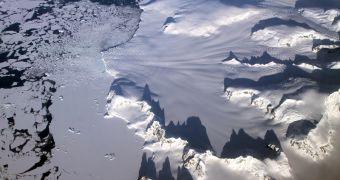According to the conclusions of a new scientific investigation, details of which appear in the January 23 issue of the top scientific journal Nature, it would appear that gradual temperature increases occurring in the northern and tropical sectors of the Atlantic Ocean play an important role in controlling and influencing the climate change currently going on in Antarctica.
The work was conducted by a team of scientists at the New York University, using funds provided by the US National Science Foundation (NSF), through its US Antarctic Program, and the Division of Atmospheric and Geospace Sciences. NASA also contributed to the investigation.
Results of the study were derived from an in-depth analysis of atmospheric data spanning back more than 30 years. The team was able to demonstrate in its new paper that regions located very far away from the South Pole can influence climate changes going on in Antarctica.
NYU experts wanted to conduct this study to understand the extreme climate changes that have been going on in the world's largest ground-based ice deposit for several decades. The strongest warming was recorded in the Antarctic Peninsula. Temperature increases here are unrivaled anywhere else in the world, scientists explain.
“Our findings reveal a previously unknown and surprising force behind climate change that is occurring deep in our southern hemisphere: the Atlantic Ocean,” explains Xichen Li, who is a PhD student with the Courant Institute of Mathematical Sciences at NYU.
“Moreover, the study offers further confirmation that warming in one region can have far-reaching effects in another,” adds the expert, who was also the lead author of the Nature paper. Thus far, the Atlantic Ocean has been largely overlooked as a potential influence for Antarctic climate change.
For this study, experts analyzed north and tropical Atlantic sea surface temperature (SST) variability – called the Atlantic Multidecadal Oscillation – over the past three decades, and found that warming of Atlantic waters always led to sea-level pressure increases in Antarctica's Amundsen Sea.
“While our data analysis showed a correlation, it was the use of a state-of-the-art computer model that allowed us to see that North Atlantic warming was causing Antarctic climate change and not vice versa,” explains the former director of the NYU Center for Atmospheric Ocean Science, David Holland.
“From this study, we are learning just how Antarctic sea-ice redistributes itself and also finding that the underlying mechanisms controlling Antarctic sea ice are completely distinct from those in the Arctic,” concludes Holland, who is currently a professor with the Courant Institute.

 14 DAY TRIAL //
14 DAY TRIAL //